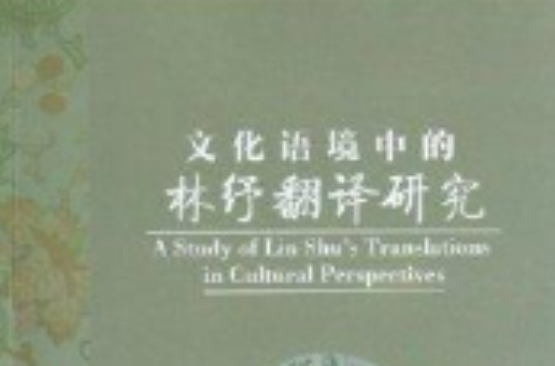本書從文化語境的視角研究林紓的翻譯作品,在回顧了前人對林紓研究的基礎上,從文化語境的角度出發,研究了林紓翻譯中的史學對等以及超越史學對等的因素,並提出須從文化、文學、翻譯等多角度來研究林紓的翻譯作品。
基本介紹
- 書名:文化語境中的林紓翻譯研究
- 作者:高萬隆
- 出版日期:2012年10月1日
- 語種:簡體中文
- ISBN:9787811406290
- 外文名:A Study of Lin Shu's Tranalations in Cultural Perspectives
- 出版社:浙江工商大學出版社
- 頁數:259頁
- 開本:16
- 品牌:浙江工商大學出版社
基本介紹
內容簡介
作者簡介
圖書目錄
1.1 Lin Shu: A Controversial Figure in Chinese Translation History
1.2 Significance of the Research on Lin Shu
1.2.1 Need for Reevaluation of Lin Shu's Translations
1.2.2 Lin Shu, Father of China's Modern Literary Translation
1.2.3 Influence of Lin Shu's Translations
1.3 Theoretical and Empirical Contribution of the Study to Translation Studies
1.4 Structure of the Work
Chapter 2 Lin Shu's Works Within a Target-oriented/Culture-oriented Framework
2.1 Target-oriented/Culture-oriented Translation Theories
2.l.1 Toury's Target-oriented Translation Theory
2.1.1.1 Translators' Main Goals
2.1.1.2 The Role and Function of Translation
2.l.1.3 Translation Strategies
2.1.2 Culture-oriented Translation Studies
2.1.3 Readers' Response and Reception Theory
2.2 Cultural Translation Studies in China
2.2.1 Target-oriented/Culture-oriented Translation Approach
2.2.2 Contextual Analysis
2.2.3 Textual Analysis
Chapter 3 Critical Literature Review on Lin Shu
3.1 Chinese Criticism
3.1.1 Affirmation by Lin Shu's Contemporaries
3.1.2 Condemnation During the May Fourth New Culture Movement .
3.1.3 Assessment After Lin Shu's Death
3.1.3.1 General Reviews
3.1.3.2 Zheng Zhenduo's "Mr Lin Qinnan" ~
3.1.3.3 Han Guang's "Lin Qinnan".
3.1.4 Negative Criticism from 1949 to 1979
3.1.5 Revival: 1980s Onwards
3.1.5.1 Qian Zhongshu's "Lin Shu's Translations" ~
3.1.5.2 New Critical Interest
3.2 Western Criticism
3.3 Key Issues in Dispute Concerning the Assessment of Lin Shu
3.3.1 Lin Shu's Thought: Conservative or Reformist?
3.3.2 A Pioneer or an Opponent of Modern Chinese Culture?
Chapter 4 Lin Shu in Cultural Context
4.1 Lin Shu's Translations in the Cultural Context
4.1.1 Lin Shu's Choice and Response
4.1.1.1 In Search of Similarities
4.1.1.2 Literary Subject Matters
4.1.1.3 Literary Genres
4.1.1.4 Literary Style and Technique
4.1.2 Output of Lin Shu's Translations
4.1.3 Lin Shu's Translation Practice
4.1.3.1 Joint Translation
4.1.3.2 Paraphrase or Free Translation
4.2 Case Study: Bali Chahuanii Yishi--Transfiguring Chinese Fiction
4.2.1 Ideological Content
4.2.2 Characterization
4.2.3 Literary Form
Chapter 5 Poetic Equivalence
5.1 Poetic Equivalence and Lin Shu
5.2 Spirit and Style
5.3 Expression in Literary Language
5.4 Sinicization
Chapter 6 Beyond Equivalence
6.1 Adaptation
6.2 Omission
6.2.1 To Overcome "Cultural Default"
6.2.2 Simplification for Succinctness
6.2.3 Treatment of Western Religious Materials
6.3 Addition
6.3.1 To Make up "a Perceived Void" in the Original Text
6.3.2 To Embellish the Original Text
6.3.3 To Bridge the Cultural Gap
6.4 Alteration
6.4.1 To Heighten the Readers' Impression
6.4.2 To Rewrite the Original Text
6.4.3 Intervention into Translation
6.5 Abridgement
Chapter 7
An Exemplar of Chinese Literary Translation
Bibliography
Glossary
List of Lin Shu's Translated Works

